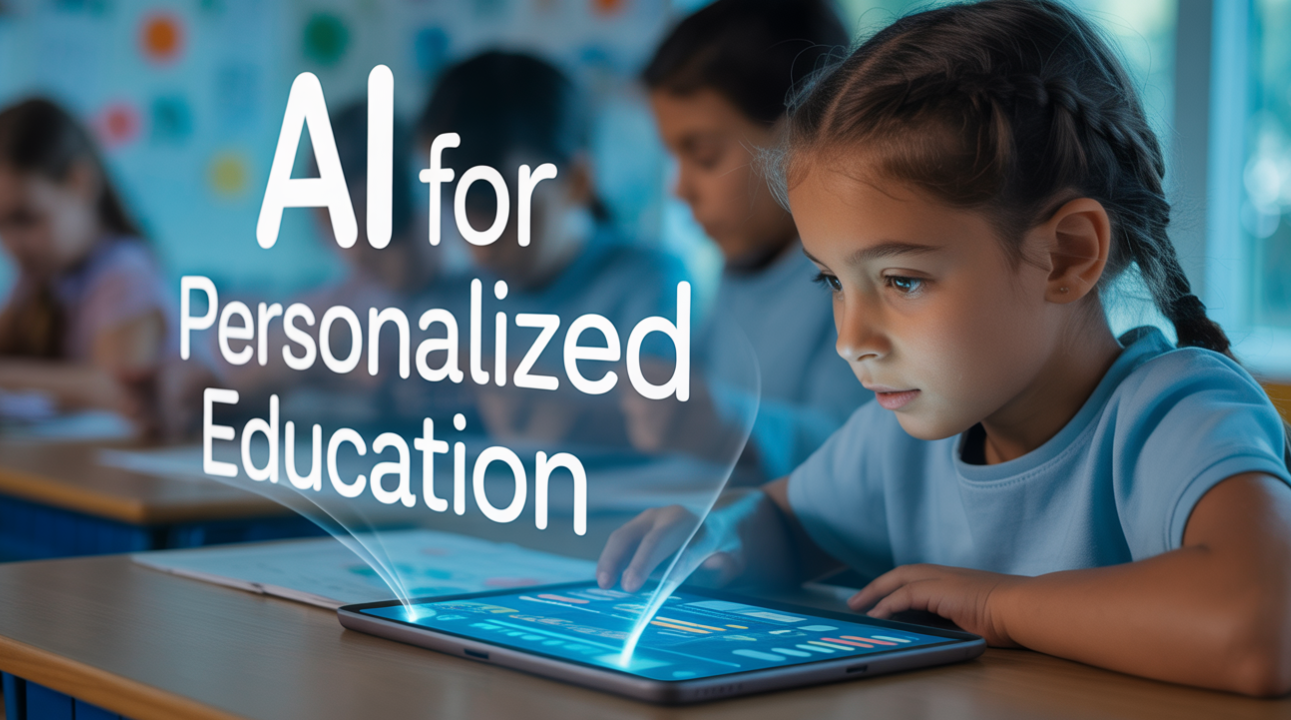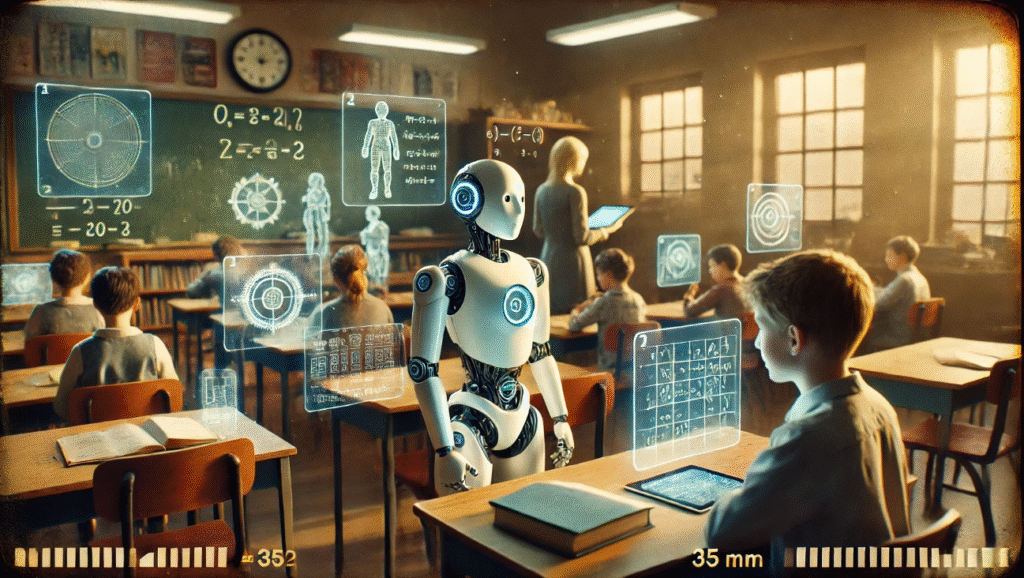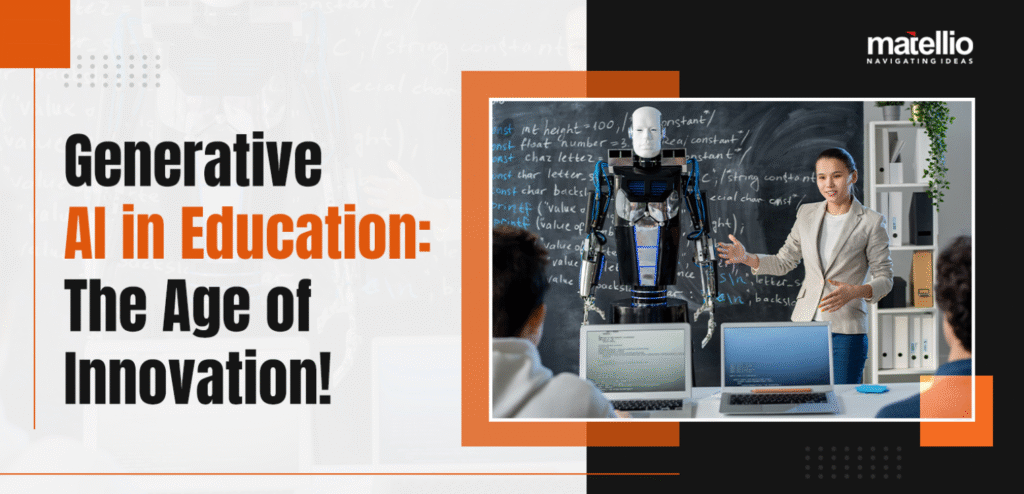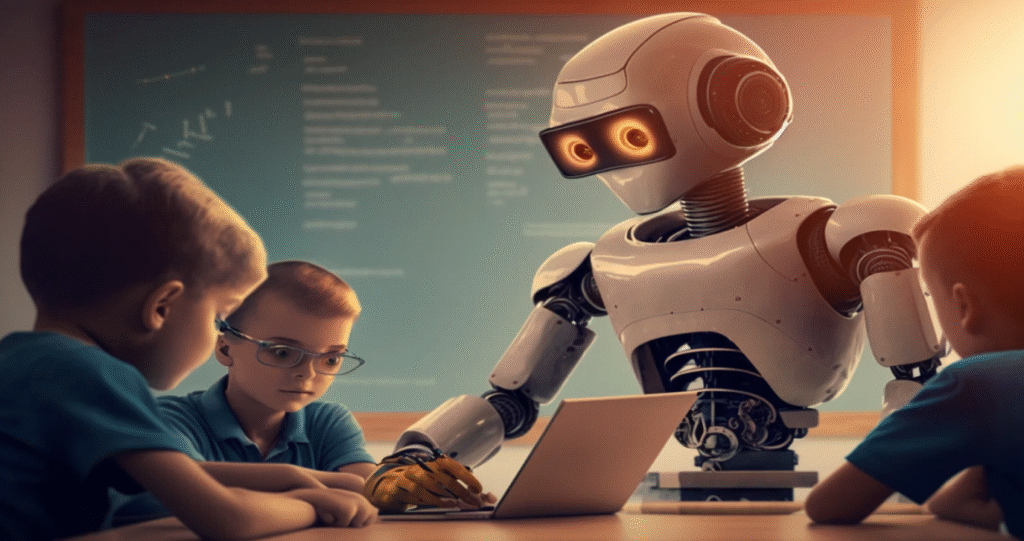
5 Ways AI Makes Learning Easier for Every Student
AI-Personalized Learning: The Future of Education
1. What is AI Personalized Learning
Education is changing big time and technology is at the heart of it. Artificial Intelligence (AI) is changing how we teach and learn. For years education systems have tried to tailor the learning experience to individual students. But creating truly personalized learning at scale has been a tough nut to crack. Enter AI and engaging learning experience. Artificial Intelligence in Education
So what does personalized learning even mean? It’s moving away from one size fits all. It’s customizing the learning experience to each student’s pace, strengths, challenges and interests. AI with its ability to process vast amounts of data quickly is making this possible. It’s like having a personal tutor who knows exactly how to support each student, adjusting lessons to their learning style, real time performance and progress.
2. How AI Learns
So how does AI learn? Using AI for personalized learning means using technology to analyze student data and make intelligent decisions in real-time about what the student needs next. This can take many forms, from adaptive learning platforms to personalized homework.
AI tools collect data on how students engage with learning content—what topics they spend more time on, where they get stuck, what they love. This data is then analyzed and the learning experience is tailored to their learning journey. The beauty of AI is it works in real-time. So if a student is struggling with a math problem or concept, AI can adjust to give them more resources, explanations or different ways of presenting the content. Personalized Learning
Data-driven learning paths means no student is left behind. For example if a student is a rockstar at reading comprehension but struggles with math, AI can adjust their learning plan to give them extra support in math while allowing them to continue to develop their reading skills. The pace at which a student moves through the curriculum is adjusted to their individual learning curve.
Not only is this more efficient and effective learning but it also gives students ownership of their learning. Instead of relying on a teacher to tell them what they need, students get real-time feedback through AI-powered assessments which tells them where they are excelling and where they need more practice. AI assessments give instant and personalized feedback.

3. AI Personalized Learning Benefits
The benefits of AI powered personalized learning in education are huge. For starters, it means better outcomes for students. Research shows that when students are shown content that matches their pace and learning style, they retain more. By using AI to tailor content to individual needs, students can progress at their own pace, without being held back or left behind by the class pace.
One of the biggest benefits of personalized learning is student engagement . Let’s face it—traditional classrooms can be a grind, especially if the content doesn’t speak to a student’s interests or ability level. But when AI personalizes the learning experience, students are more likely to be engaged and motivated because they are working on content that challenges them without overwhelming them.
Another big win for AI is time management. Traditionally, educators spend a lot of time assessing student progress, grading assignments and planning lessons. With AI, much of that work is automated, so teachers have more time to focus on what they do best—teaching. This means teachers can give more one on one attention to students who need it, so they can stay on track and achieve their goals. More efficient use of time benefits students and teachers.
And content and pacing for diverse learning needs is key in a classroom with students of different abilities. AI levels the playing field by providing customized learning experiences, so all students—whether advanced or struggling—have the support they need to succeed. The ability to adjust content in real time is especially helpful for students with special needs, so they aren’t left behind in a system that doesn’t take their learning style into account.
STOP STOP STOP Must watch My More Article to kind for your Informations https://earnaidesk.com/best-ai-tools-for-student-notes-2026/
4. The Technologies Behind AI Personalized Learning
So what powers AI personalized learning? It’s the technology behind the scenes that makes all this happen. Machine learning algorithms are one of the key components that drive AI personalized learning. These algorithms learn from data, identify patterns and make predictions and then personalise the learning experience. For example an AI system might notice a student is struggling with a particular math concept and suggest a more detailed explanation or video that explains the topic in a different way. Digital Learning Platforms

Another powerful tool in AI is Natural Language Processing (NLP) which is used to enhance student interaction with AI. Through NLP AI systems can understand and respond to written or spoken input from students. This means AI powered virtual tutors or chatbots can answer student questions in real time, guide them through difficult concepts, provide explanations and offer additional resources.
Generative AI for personalized learning & self development is also emerging as a game changer. Generative AI doesn’t just recommend resources or tweak existing content – it creates new, customised content based on the student’s progress and needs. It can generate practice problems, quizzes and even interactive simulations all tailored to the student’s current learning stage.
Predictive analytics is another AI tool used in education. By analysing historical student data AI can identify potential learning gaps before they become a problem. Early intervention is key here and predictive analytics helps teachers and students take proactive steps to ensure academic success.
5. AI Personalized Learning Applications
AI personalized learning is already being used in many educational settings. From K-12 to higher education and corporate training, AI is part of the daily learning experience.
In K-12 , schools are using AI to create more adaptive and engaging classrooms. Platforms like DreamBox and Smart Sparrow let students learn at their own pace and get personalized lessons. AI tools give teachers data on each student’s progress so they can offer support where it’s needed most.
In higher education , AI is changing the classroom experience. For example, some universities are using AI to help students choose courses that match their interests, academic strengths and career goals. AI-powered learning management systems help professors track student progress in real-time so they can identify struggling students and offer help on time. Higher education institutions are also using AI for administrative tasks which helps to streamline operations and reduce administrative burden.
Corporate training programs are another area where AI is making a big impact. Companies are using AI to create personalized learning paths for employees. These platforms can analyze employees’ skills, knowledge gaps and career goals and offer tailored training modules to help them grow in their roles.
Even lifelong learning platforms are using AI. Whether you’re learning a new language or picking up coding skills, AI-powered platforms like Duolingo or Coursera offer a personalized experience that adapts to your progress.
6. Challenges and Ethical Considerations
While AI offers a world of opportunities, there are challenges and ethical concerns that must be addressed. Data privacy and security are two of the biggest issues when it comes to AI in education. With AI collecting and analyzing massive amounts of student data, there’s a real concern about how that data is stored, protected, and used. Ensuring the privacy and safety of student information is a top priority.
Another concern is bias in AI algorithms . AI systems are only as good as the data they are trained on. If the data is biased in some way—say, it reflects sociological inequalities—then the AI system could perpetuate these biases. For example, if an AI system is trained on data that disproportionately represents certain groups of students, it may not provide equitable learning experiences for all students.
Over-reliance on technology is another potential issue. While AI can enhance the learning experience, it’s essential that it doesn’t replace human interaction. Teachers play an irreplaceable role in fostering critical thinking, creativity, and emotional intelligence—areas that AI can’t replicate.
Finally, there’s the issue of the digital divide . Not all students have equal access to the technology needed to take advantage of AI-powered learning. Ensuring equitable access to AI in education is crucial, particularly for students in underserved communities. AI Education Programs

7. AI’s Impact on Education: Case Studies & Innovations
The potential of AI in education is being realized across the globe. AI Leap 2025: Estonia sets the standard for AI in education is a prime example. Estonia has taken a proactive approach to integrating AI into its education system, ensuring that students are not only learning about AI but also using it as part of their everyday learning. By 2025, Estonia plans to be a global leader in AI education, with the goal of equipping students with the skills they need to thrive in a technology-driven world.
In the US, Student engagement platforms like Classcraft and Edmodo are gaining popularity. These tools help make learning more engaging by incorporating gamification, real-time feedback, and personalized experiences. By fostering a fun and interactive environment, these platforms keep students motivated and invested in their learning journey.
8. The Future of AI Personalized Learning
Looking to the future, AI is poised to revolutionize education even further. Imagine combining AI with augmented reality (AR) or virtual reality (VR) . This combination could lead to immersive learning experiences, allowing students to interact with 3D models, virtual environments, or historical events in a way that traditional classrooms can’t replicate.
As AI continues to evolve, we can expect even more advanced tools that will make learning more accessible, engaging, and personalized than ever before. The future of AI in education is exciting, and it’s only just beginning.
9. Conclusion
To wrap it up, AI has already begun transforming the landscape of personalized learning. By analyzing data, adjusting content in real-time, and providing tailored feedback, AI is giving students and teachers a new way to approach education. The impact of artificial intelligence on personalized learning is profound and has the potential to shape the future of education in ways we’re only beginning to understand. Personalized Learning Strategies
https://www.hurix.com/blogs/how-to-implement-personalized-learning-that-truly-engages-students/
